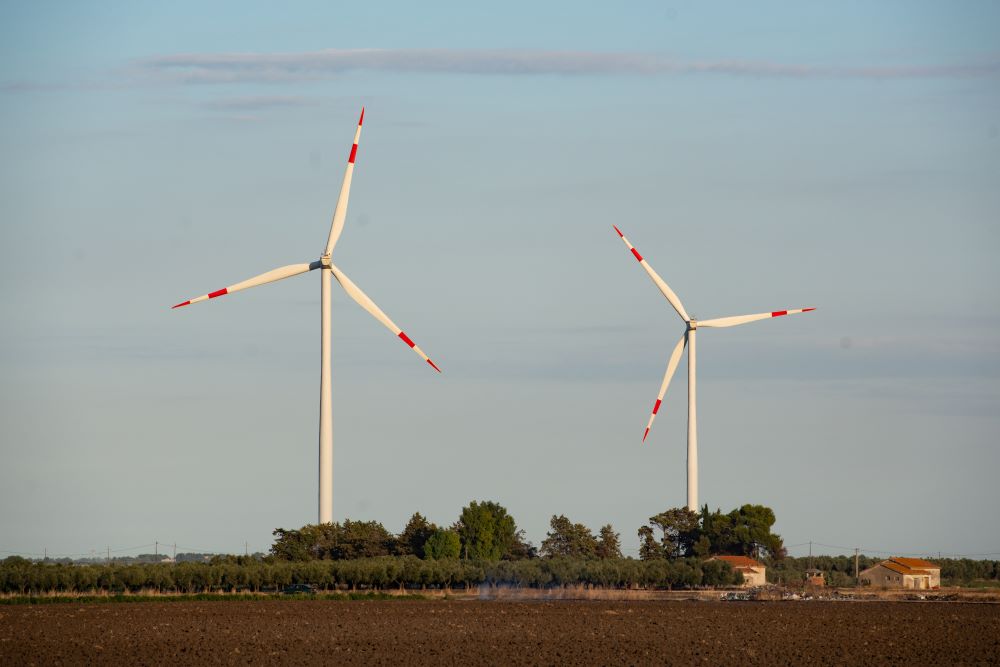Mads Christensen is the international executive director of Greenpeace.
In the two decades since Greenpeace launched its groundbreaking Energy Revolution scenarios in 2005, renewable energy uptake has accelerated at speeds most analysts could not have anticipated, but leaders at the UN General Assembly must act even more boldly.
Greenpeace’s pioneering vision for the clean energy transition was once considered unrealistic, perhaps even idealistic – but given the rapid changes to the world’s power generation, the scenarios have been proven right and perhaps not even ambitious enough.
It’s a charge, however, that can be more readily laid at current world leaders attending the UN General Assembly in New York this month who lack sufficient ambition.
Under existing policies and targets, the International Energy Agency (IEA) found in June that renewable energy capacity would grow to 8,000 gigawatts (GW) by 2030, missing the target to triple capacity to 11,000 GW – an objective agreed at the UN climate talks COP28 in Dubai last year.
Global goal of tripling renewables by 2030 still out of reach, says IRENA
Political leaders must now turn that promise into action as part of a fast and fair fossil fuel phase-out. These are issues to also be discussed in New York at the first Global Renewables Summit, which I will attend, and where governments will be urged to ‘Now Deliver Change’.
With new Nationally Determined Contributions (NDCs) for 2035 due by next February, it is essential they include robust policies and targets for renewable energy expansion, while also targeting the goal of doubling the annual rate of energy efficiency improvements by 2030.
Let’s be clear: the consequences for a lack of action are dire. Between 2030 and 2050, climate change is expected to cause approximately 250,000 additional deaths per year from under-nutrition, malaria, diarrhoea and heat stress alone. Climate action now is essential.
All three of the world’s hottest years on record – 2023, 2020 and 2016 – have occurred since the Paris Agreement in 2015 set the goal to limit warming to 1.5°C and already 2024 is on track to eclipse last year.
Renewable energy implementation must now reach the heights of our stated ambition if we’re to stave off the worst impacts of a changing climate and protect people from harm.
Rising demand fuels risk
The IEA is urging governments to close the “bridgeable” gap between current policies and what’s required to meet the 2030 renewables targets.
That requires an accelerated roll-out of renewables, but we must also improve energy efficiency and total energy demand reductions to minimise the adverse impacts of mining for the critical minerals essential for today’s clean energy.
The IEA notes solar PV and wind energy capacity accounted for 95 percent of growth in renewables expansion in 2023 as demand for critical minerals remained robust.
Q&A: What you need to know about clean energy and critical minerals supply chains
However, to limit warming to 1.5°C, one of the latest IEA scenarios estimates that $800 billion of investment in mining for critical minerals is required up to 2040. This need for new supplies, however, puts Indigenous Peoples, local communities and the environment at risk.
Critical minerals present a multitude of complex issues, such as the inherent uncertainty of the demand estimates. Rather than ramping up mining to an uncertain projection while trying to limit adverse impacts, we must first understand which impacts might be avoidable.
Opaque supply chains
Actions to achieve overall energy, resource and material reductions, such as through energy efficiency and circularity, must be combined with long-term holistic societal and policy changes to minimise environmental impacts and stay within planetary boundaries.
Better public transport systems, as outlined in Greenpeace’s Sustainable Mobility Vision, can greatly reduce the need for critical minerals in electric vehicles – a huge source of forecast demand – while promoting more equitable access to mobility.
Critical minerals in short supply should be prioritised for the energy transition above other uses, and substitution is a great opportunity to leverage abundant and lower-impact options (for example, EV batteries that do not use key metals such as nickel and cobalt).
Human rights must be “at the core” of mining for transition minerals, UN panel says
Where mining is required, it needs to occur within limits, avoiding sensitive areas – including the deep sea – and it must respect the rights of Indigenous Peoples and local communities, ensuring their empowerment in decision-making, with benefits shared equitably.
There’s also plenty of work to be done in ensuring adequate governance, traceability, human rights, worker safety and equity across the energy transition supply chains, which often remain relatively opaque and fraught with challenges.
But like any problem, there are solutions if we’re brave and prepared to not only envision a new world, but commit with concerted action to bringing it to life. Imagine how far and how quickly we could go if today’s political leaders put their full weight behind an urgent renewables push.
The climate crisis demands bold, transformational change and the only thing stopping us is a lack of political will to act now.
